Antonino Franchina was born in 1912 in Palmanova, Friuli Venezia Giulia, in the North East of Italy, but his parents were from Sicily and the family moved back to Palermo soon after his birth.
Nino grew up in Sicily and stayed there till 1934, when, after graduating in Sculpture at the Accademia di Belle Arti, he moved to Milan together with Renato Guttuso, Giovanni Barbera e Lia Pasqualino Noto. The four constituted the ‘Gruppo dei Quattro’ and exhibited at the Galleria del Milione in Milan in 1934, and then in Rome, in 1935 and 1937, respectively at the Galleria Bragaglia Fuori Commercio and at the Galleria della Cometa. For the first of these two shows, a catalogue featuring a presentation by Carlo Carrà, was published.
Along with Guttuso, Franchina joined the ‘Corrente’ group in Milan, before moving to Rome in 1938, where he met and married Gina Severini, daughter of the futurist artist Gino. Nino’s works were showed at the third Quadriennale (1939) and in a personal show at the Galleria Minima in 1943.
Franchina’s style was clearly figurative up until this point; after the war he started moving towards abstraction through a sort of expressionist period, in which a recurring subject was that of people in pain suffering from the war, often depicted using red ink. After the Italian liberation he took part to the exhibition ‘L'arte contro la barbarie’ at the Galleria del Secolo in Rome.
Well aware of the European sculpture developments, Franchina’s works became completely abstract between 1948 and 1950, when living in Paris he saw and studied the works by Picasso, Gabo, Calder and Brâncuși - he remained strongly connected to Sicily, to the Greek sculptures of Metope and Telamoni, but he admitted to be heavily influenced by Moore, Lipchitz, Laurens and Zadkine.
In 1948 Franchina was invited for the first time at the XXIV Venice Biennale, where he returned in 1950, 1952, 1954, 1958, 1966, 1968, 1972, 1978 and 1988.
In 1949 he had a personal show at the Galleria Pierre in Paris. In 1953 Franchina took part to the II Biennale of sculpture in Antwerp and to the exhibition about abstract art in Italy and France at the Galleria nazionale d'arte moderna di Roma. In 1958 he participated to the second edition of Documenta 2 Skulptur in Kassel, then he had shows in São Paulo, Pittsburgh, Munich and Tokyo in 1961.
In 1961 Franchina executed a bust of Antonio Gramsci, the work was commissioned from the Italian government for its collection of Italian Modern art. In 1965 he worked at the scenography of the ballet ‘Le Testament di François Villon’ with music by Ezra Pound e choreography by John Butler, which was part of the Spoleto Festival dei Due Mondi programme.
In 1975 anthological exhibition of his works was organised in Gubbio, within the VII Biennale d'arte del metallo.
The personal show at the Galleria Mara Coccia in Rome dates to 1986; in the same year he took part to the XI Rome Quadriennale.
After the artist’s death in 1987, his workshop in Via Margutta in Rome became the Severini-Franchina archive; it conserves documents, original photographs and objects that belonged to Nino Franchina and Gino Severini.
In 2011 a contemporary art museum in Sant'Agata Militello was opened and named after the sculptor.
Antonino Franchina wurde 1912 in Palmanova, Friaul-Julisch Venetien, im Nordosten Italiens geboren, aber seine Eltern stammten aus Sizilien und die Familie zog bald nach seiner Geburt zurück nach Palermo.
Nino wuchs in Sizilien auf und blieb dort bis 1934, als er nach seinem Abschluss in Bildhauerei an der Accademia di Belle Arti zusammen mit Renato Guttuso, Giovanni Barbera und Lia Pasqualino Noto nach Mailand zog. Die vier bildeten die "Gruppo dei Quattro" und stellten 1934 in der Galleria del Milione in Mailand und 1935 und 1937 in Rom in der Galleria Bragaglia Fuori Commercio bzw. in der Galleria della Cometa aus. Für die erste dieser beiden Ausstellungen wurde ein Katalog mit einer Präsentation von Carlo Carrà veröffentlicht.
Zusammen mit Guttuso schließt sich Franchina der Gruppe Corrente" in Mailand an, bevor er 1938 nach Rom zieht, wo er Gina Severini, die Tochter des futuristischen Künstlers Gino, kennenlernt und heiratet. Ninos Werke wurden auf der dritten Quadriennale (1939) und in einer Einzelausstellung in der Galleria Minima im Jahr 1943 gezeigt.
Franchinas Stil war bis zu diesem Zeitpunkt eindeutig figurativ; nach dem Krieg begann er, sich in einer Art expressionistischer Periode der Abstraktion zuzuwenden, in der ein wiederkehrendes Thema die unter dem Krieg leidenden Menschen waren, die oft mit roter Tinte dargestellt wurden. Nach der Befreiung Italiens nahm er an der Ausstellung "L'arte contro la barbarie" in der Galleria del Secolo in Rom teil.
Als er in Paris lebte, sah und studierte er die Werke von Picasso, Gabo, Calder und Brâncuși - er blieb stark mit Sizilien verbunden, mit den griechischen Skulpturen von Metope und Telamoni, aber er gab zu, stark von Moore, Lipchitz, Laurens und Zadkine beeinflusst zu sein.
Im Jahr 1948 wurde Franchina zum ersten Mal zur XXIV. Biennale von Venedig eingeladen, wo er 1950, 1952, 1954, 1958, 1966, 1968, 1972, 1978 und 1988 erneut teilnahm.
Im Jahr 1949 hatte er eine persönliche Ausstellung in der Galleria Pierre in Paris. Im Jahr 1953 nahm Franchina an der II. Biennale für Bildhauerei in Antwerpen und an der Ausstellung über abstrakte Kunst in Italien und Frankreich in der Galleria nazionale d'arte moderna di Roma teil. Im Jahr 1958 nahm er an der zweiten Ausgabe der Documenta 2 Skulptur in Kassel teil und hatte 1961 Ausstellungen in São Paulo, Pittsburgh, München und Tokio.
1961 schuf Franchina eine Büste von Antonio Gramsci, die von der italienischen Regierung für ihre Sammlung moderner italienischer Kunst in Auftrag gegeben wurde. 1965 arbeitete er an der Szenografie des Balletts "Le Testament di François Villon" mit Musik von Ezra Pound und Choreografie von John Butler, das Teil des Programms des Spoleto Festival dei Due Mondi war.
1975 wurde in Gubbio im Rahmen der VII. Biennale d'arte del metallo eine anthologische Ausstellung seiner Werke organisiert.
Die persönliche Ausstellung in der Galleria Mara Coccia in Rom datiert aus dem Jahr 1986; im selben Jahr nahm er an der XI Quadriennale in Rom teil.
Nach dem Tod des Künstlers im Jahr 1987 wurde sein Atelier in der Via Margutta in Rom in das Severini-Franchina-Archiv umgewandelt, in dem Dokumente, Originalfotografien und Objekte aus dem Besitz von Nino Franchina und Gino Severini aufbewahrt werden.
Im Jahr 2011 wurde ein Museum für zeitgenössische Kunst in Sant'Agata Militello eröffnet und nach dem Bildhauer benannt.
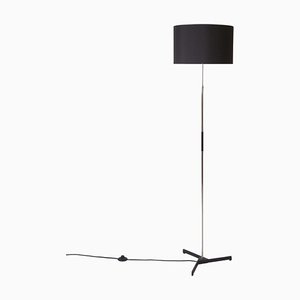
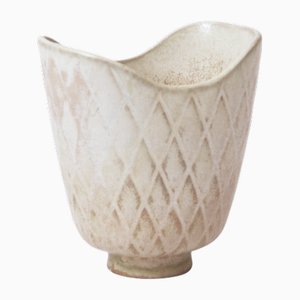
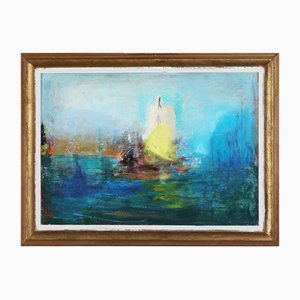
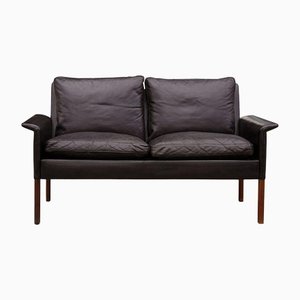

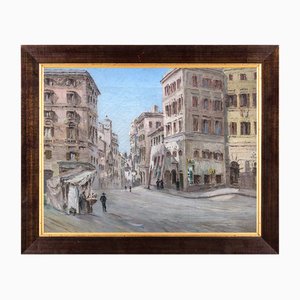



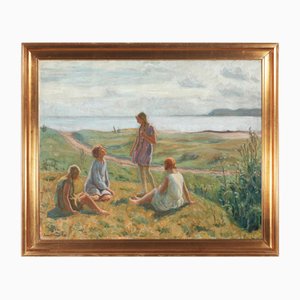
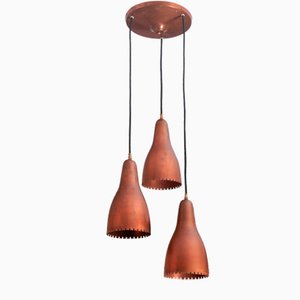
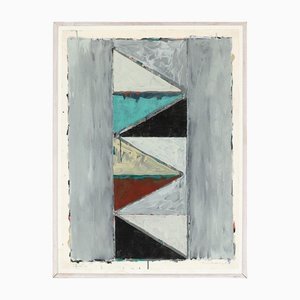
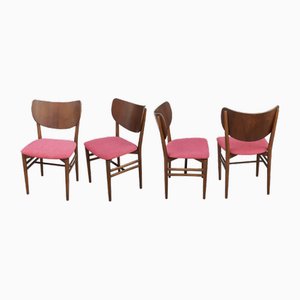
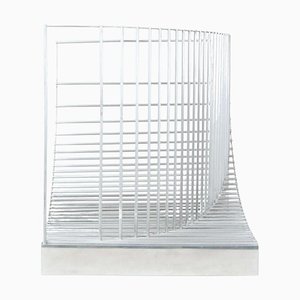
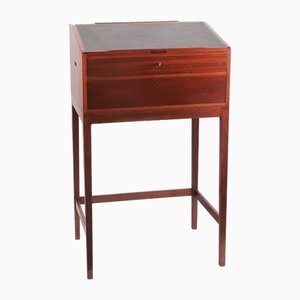
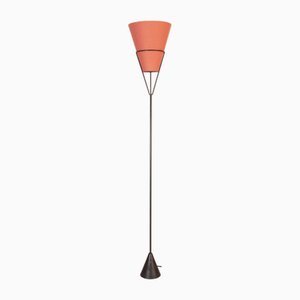


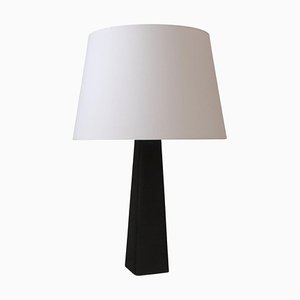
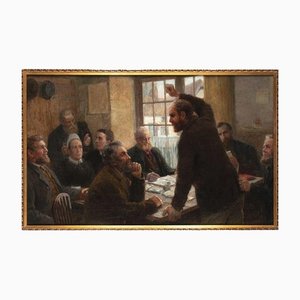
Schreiben Sie uns
Ein Angebot machen
Uns ist aufgefallen, dass Sie neu bei Pamono sind!
Bitte akzeptieren Sie die Allgemeinen Geschäftsbedingungen und die Datenschutzerklärung
Schreiben Sie uns
Ein Angebot machen
Fast geschafft!
Um die Kommunikation einsehen und verfolgen zu können, schließen Sie bitte Ihre Registrierung ab. Um mit Ihrem Angebot auf der Plattform fortzufahren, schließen Sie bitte die Registrierung ab.Erfolgreich
Vielen Dank für Ihre Anfrage! Unser Team meldet sich in Kürze bei Ihnen zurück.
Wenn Sie Architekt*in oder Inneneinrichter*in sind, bewerben Sie sich hier um dem Trage Program beizutreten.